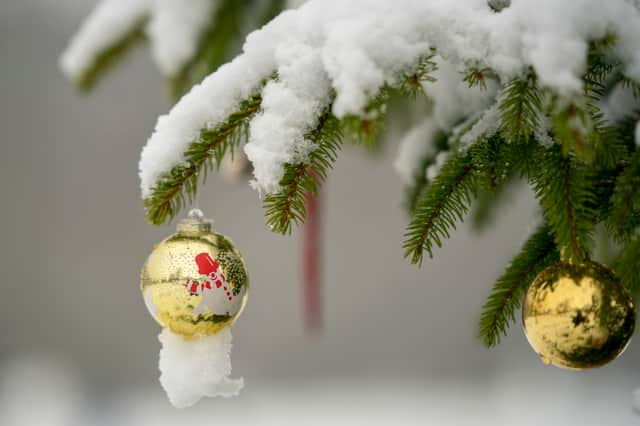Christmas forecast: what are the chances of a white Christmas and will it snow on Christmas day?


There is a "small chance" of a white Christmas in the UK but it looks more likely to be raining in many areas on Christmas day.
The Met Office has predicted this month there will be unsettled conditions and average temperatures for the time of the year but the biggest chance of rain is expected in the North West through Christmas week. However, it also said there is an increasing chance of snow and ice late in December and into the New Year period.
Advertisement
Hide AdAdvertisement
Hide AdA white Christmas is defined as a single snowflake falling in the 24 hours of Christmas Day, and the National Weather Service states that it can "accurately forecast if snow is likely on any given Christmas Day up to five days beforehand."
Meteorologists say in their long-range forecast the chances of a "colder spell of weather with hazards such as snow and ice" towards late December are increasing.
The Met Office's current official forecast for 25 December until 8 January on its website states: "More likely to be unsettled compared to the preceding settled spell with bands of rain crossing the UK with brighter conditions and showers in between. The wettest and windiest conditions are most likely in the west and northwest. The chance of a colder spell of weather, with hazards such as snow and ice, does increase later in December and into the New Year period. However, on balance conditions are more likely to remain generally mild and wet."
Forecasters predict that the UK is more likely to see snow between January and March than in December, with snow or sleet falling an average of 3.9 days in December, compared to 5.3 days in January, 5.6 days in February and 4.2 days in March.
Advertisement
Hide AdAdvertisement
Hide AdWhite Christmases were more frequent in the 18th and 19th centuries, but climate change has brought higher average temperatures over land and sea and this generally reduced the chances of a white Christmas.
Comment Guidelines
National World encourages reader discussion on our stories. User feedback, insights and back-and-forth exchanges add a rich layer of context to reporting. Please review our Community Guidelines before commenting.
